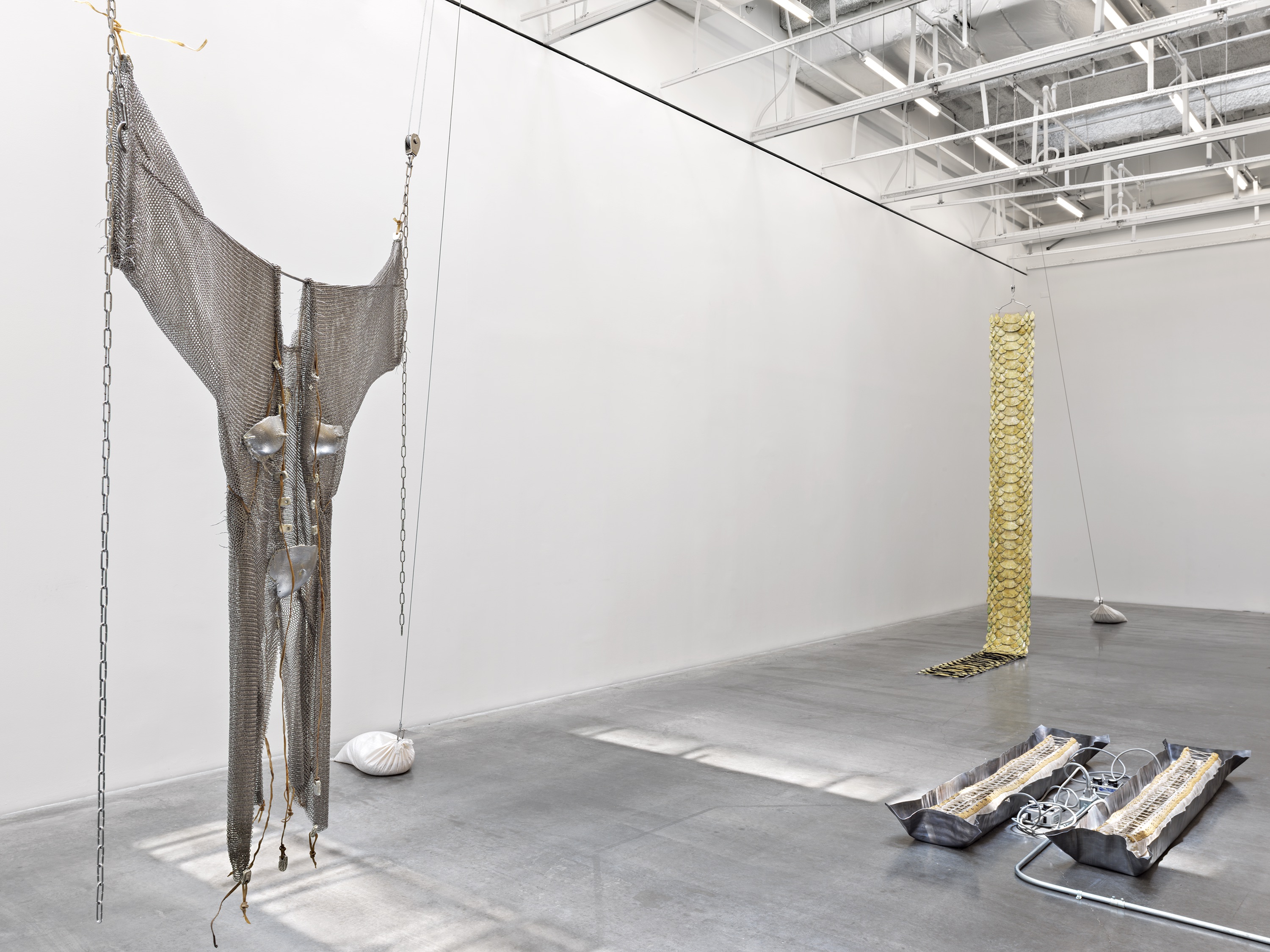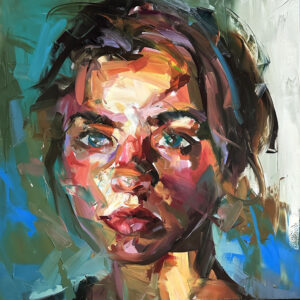
“Viscera has questions about itself,” an exhibition now on view at the New Museum, exemplifies the artist Elaine Cameron-Weir’s absorption of different eras, materials and aesthetic styles into singular works that are collectively cohesive yet unsettled.
The five sculptures that comprise the show (all new works made this year) incorporate pre-existing industrial materials—a 19th century dental phantom, laboratory equipment, fabric heating mantles, a neon light, stainless steel drums, sandbags—with more sensual materials including rawhide cords and silk. There is also an olfactory element, which emphasizes the influence of scent since ancient times. In one work, a thick brown resin called labdanum pools inside two long corseted heating jackets (the artist found them on Ebay). Once warmed, the fragrance, which has a long history of medicinal treatments and is used for perfumes, releases its spiced, woody scent into the gallery, layering another sensual dimension to the physical pieces.
This show, the artist’s first solo exhibition in a museum, reveals Cameron- Weir’s distancing of artist as author through a process of transforming the solitary act of making art into a collective experience that differs for every viewer. Cameron-Weir’s desire to bring dissonant forces together also works to rethink old orders in art history, which tend to privilege the visual over other senses. Here, the artist invokes memory, history and dislocation. “We need artists to remind us of sensory experiences we’ve shut out,” says Natalie Bell, who curated the exhibition. “She is challenging a paradigm, coming to the work from an intuitive place, not an academic one.”

The titles of each artwork balance the duality between straightforward and complex. Simple titles include Vault, which includes an antiquated metal set of teeth and an electrical conduit with a resin-filled glass clamshell, or Lamp with Garment, a parachute silk shirt with neon light. Names of other pieces seem to demonstrate word salad: viscera has questions about itself it pushed the corner of the room down from behind so that it could not move and delivered the following message: it are now in an erogenous zone. In altered-state subcutanean tantric the skingrip palpable, it, a chainmail jacket with pewter and aluminum hardware attached to resemble a skeletal bone structure.
A collapsing of dimensions eases the palpable tensions set up by combining corporeal and machine. Cameron-Weir’s sculptures liberate traditional dualisms of mind and body, animal and machine, sci-fi and reality, ideology and materialism. It is difficult not to conjure Donna Haraway’s “Cyborg Manifesto,” a theoretical text from 1984 that uses non-linear, non-binary language to argue for the pleasure in hybridity.
Born in Alberta, Canada and now based in New York, Cameron-Weir draws upon her interest in phenomenology, the 19th century European aesthete, medieval scientific books and sensory archeology, a field that favors a multisensory mode of approaching the past to cross boundaries between time periods, geographies, and material specializations. “What makes Cameron-Weir dynamic as an artist is that she isn’t precious with works and materials,” says Bell. The overall effect is an exhibition that presents a view from the subconscious; her sculptures evoke hypnagogic hallucinations—those visions, thoughts, and sounds experienced while in that not quite lucid state somewhere between wakefulness and dreaming, where little makes logical sense but there is lasting impact. Time is simultaneously suppressed and expansive, and objects slip into the hyperreal. It lends the sculptures a phantasmagoric quality, where the works appear as though they are investigating themselves, questioning (as the title alludes) their very existence. They seem self-aware, that they could almost reconfigure themselves by way of disassemblage and reassemblage.
Adding to the confluence of references is Cameron-Weir’s interest in modes of display. At her request, the museum removed the gallery’s ceiling tiles to expose the architectural infrastructure and uncover skylights that are usually hidden. Natural light casts silhouettes of the windows onto the sculptures and the gallery space, fusing inner and outer space, and shifting in color and position as the day wears on. It’s a ghostly augmentation to a show that converges the extrasensory with the materially present.










 in your life?
in your life?

